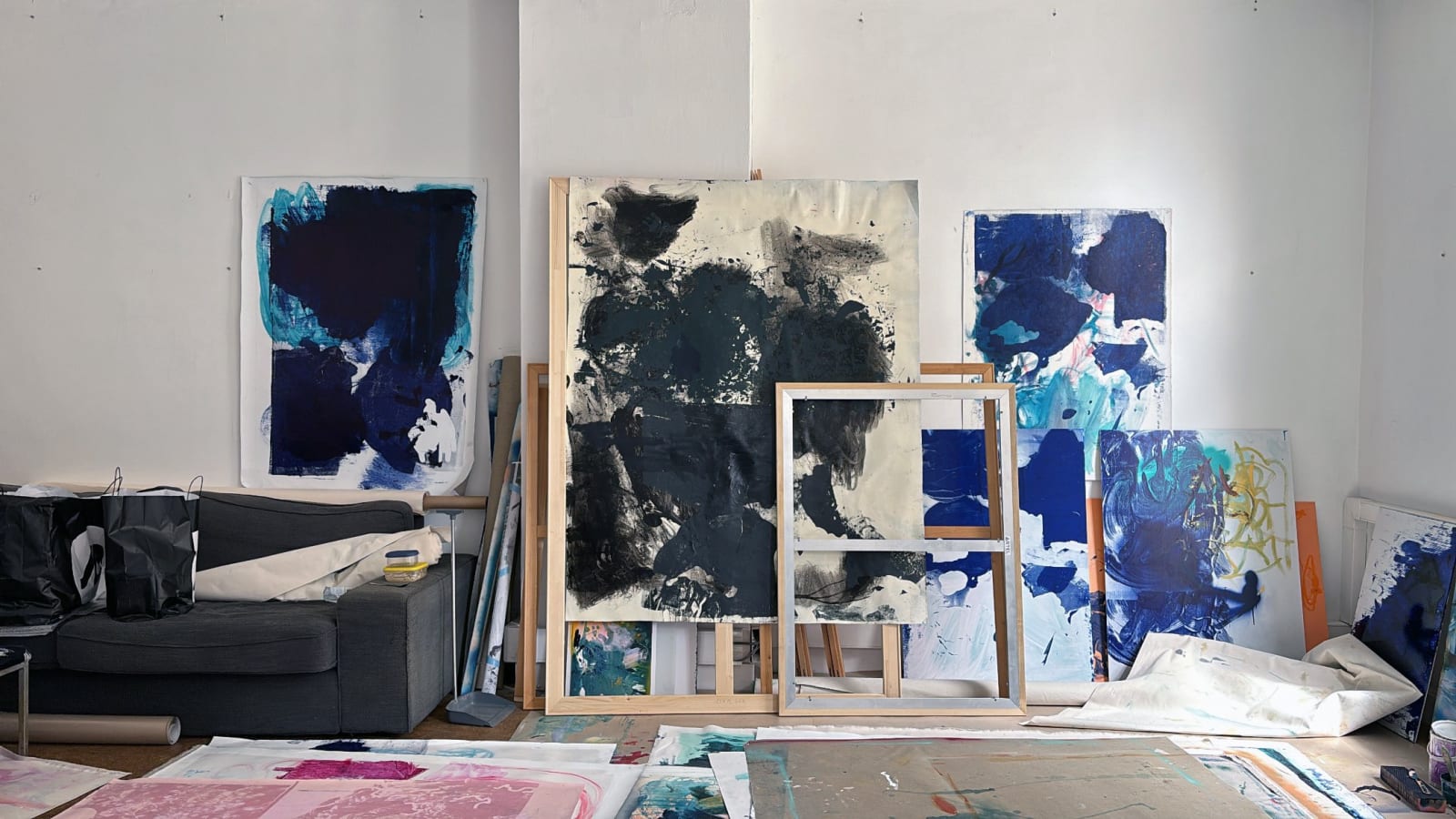Lieven Deconinck, previously a key figure in the trio Leo Gabin, is now stepping forward under the name Deconinck, marking a defining moment in his artistic journey. Known for his work that helped shape the identity of Leo Gabin, Deconinck is embracing a powerful new path in which his singular vision can now take center stage.
For over two decades, Leo Gabin, with Deconinck at its core, captured the critical attention of the contemporary art world. Emerging from Ghent in 2000, the collective became recognized for its multi-disciplinary approach, using found footage, internet imagery, and social media content as raw material. They explored how digital content, particularly the borderless imagery of American pop culture, infiltrated and reshaped the online and physical worlds alike.
Their method? Distort, abstract, and repurpose. The collective's ability to break down traditional media barriers-working across video, print, sculpture, and painting-became one of their defining strengths. Leo Gabin's work, often darkly reflective, captured the ephemeral nature of online culture, the blurred lines between private and public spaces, and the unsettling undercurrents of youth culture and celebrity obsession. Themes of sex, violence, and fame, harvested from social media platforms, were filtered into complex narratives that explored identity and the digital age. It was this nuanced reflection on contemporary life that positioned Leo Gabin as key voices in the post-internet art movement, securing solo exhibitions at renowned galleries like White Cube in London, Peres Projects in Berlin, and Elizabeth Dee Gallery in New York.
One of their standout exhibitions, A Crackup at the Race Riots, based on Harmony Korine's 1998 novel, was a pointed commentary on the realities of American pop culture, consumerism, and the fractured American dream. Presented at White Cube in 2014, the two-part film and series of paintings brought the harsh realities of internet culture to the forefront, juxtaposing images of desolate Florida suburbs with glossy, highly commercialized versions of happiness. In many ways, this body of work epitomized the collective's ability to critique the pervasive influence of digital media on real-world experiences.
But the time has come for Deconinck to shift direction. Stepping out from the collaborative framework, Deconinck seeks to distill the same energy, tension, and cultural critique into a solo practice. His artistic drive is far from diluted; if anything, it gains strength in this focused, personal pursuit. While echoes of Leo Gabin's concerns still resonate in his work, Deconinck's solo practice moves deeper into abstraction, exploring the materiality of paint, surface, and the interplay between analog and digital processes.
Under the name Deconinck, he will continue his exploration of large-scale abstraction, pushing the boundaries of material experimentation with a particular focus on combining gestural painting with silkscreen techniques. His works are layered with tension-between control and spontaneity, between the handmade and the mechanized-creating visual dialogues that evoke a broader commentary on the human experience in the digital age. His process remains rooted in the same sharp, cultural observations as Leo Gabin's work, but now with a more intimate, singular voice.
The decision to go solo marks a definitive new chapter for Deconinck. This transition is not merely about stepping away from a collective; it is about consolidating a vision that has been forming through years of collaboration. Deconinck is not just a rebranding; it is a bold assertion of identity, an embrace of individuality. His approach remains methodical, maintaining the conceptual rigor that defined Leo Gabin's work, while at the same time diving headfirst into new material possibilities.
Deconinck's upcoming participation in Shift: Abstract Transformations at Buysse Gallery in Knokke signals a strong start to this solo career. The exhibition, curated by Romanian curator Carmen Casiuc, explores contemporary perspectives of abstraction, and Deconinck's contribution is expected to stand out for its balance of conceptual sharpness and material experimentation. It will be his first significant public display as Deconinck, marking a clear shift towards an independent voice that is simultaneously familiar yet refreshingly new. The exhibition is set to offer audiences an opportunity to witness Deconinck's journey from a collective artist to an individual force, and the art world is already anticipating the impact of this next phase.
In many ways, Deconinck represents a return to core artistic principles-the hand of the artist, the immediacy of material, and the abstraction of thought into form. But it's also a forward-looking vision that continues to engage with the complex, ever-changing relationship between art, technology, and culture. His solo practice promises to challenge viewers to engage with these realities in fresh, unexpected ways. For those who have followed his journey with Leo Gabin, this next step marks a moment of both continuity and reinvention, one that holds the promise of new discoveries and deeper insights into the evolving role of art in our digital age.
For collectors, curators, and long-time supporters, Deconinck offers a chance to engage with a body of work that, while building on a legacy, forges its own path. His shift from collaboration to solo practice is not just a personal evolution; it reflects a broader shift within contemporary art-one where individual vision is as essential as the collective conversation. This next phase for Deconinck promises to be a defining moment in contemporary abstraction, one that will undoubtedly make its mark in the years to come.


